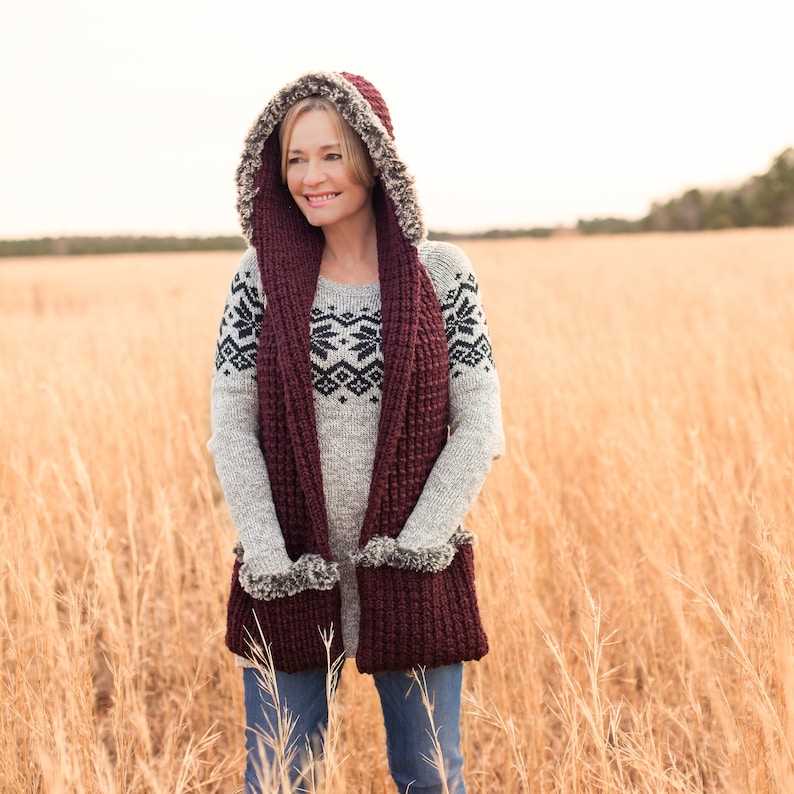
Are you looking for a cozy and stylish accessory to add to your winter wardrobe? Look no further – we have the perfect solution for you! Introducing the free knitted hooded scarf pattern, a versatile and fashionable piece that will keep you warm and trendy all season long.
This pattern is perfect for knitters of all skill levels, from beginners to advanced. With detailed instructions and clear diagrams, you will be able to create your own beautiful hooded scarf in no time. Whether you want to make it for yourself, or gift it to a loved one, this pattern is sure to impress.
Not only is this hooded scarf practical and fashionable, but it is also customizable to fit your unique style. You can choose your favorite yarn and color combination to make it truly one-of-a-kind. With its cozy hood and long scarf, this accessory is perfect for those chilly winter days when you want to stay warm and look great.
What is a knitted hooded scarf?
A knitted hooded scarf, also known as a scoodie, is a versatile and cozy accessory that combines the functionality of a scarf and a hood. It is often knitted using bulky or chunky yarn to create a thick and warm fabric that provides extra protection from the cold weather.
The knitted hooded scarf features a long scarf-like section that wraps around the neck and drapes down the front of the body, providing warmth and insulation to the neck and upper chest. Attached to one end of the scarf is a hood, which can be pulled up to cover the head and provide extra warmth and protection against wind and snow.
This type of scarf is popular among knitters and outdoor enthusiasts due to its practicality and versatility. It can be worn in various ways, such as hanging the scarf part loosely around the neck, wrapping it around the neck for extra warmth, or pulling up the hood to cover the head and face.
A knitted hooded scarf can be customized to suit individual preferences and styles. Knitters can experiment with different yarn colors and patterns to create unique and personalized designs. Additionally, some patterns even include pockets or buttons for added functionality and style.
Overall, a knitted hooded scarf is a fashionable and functional accessory that is perfect for keeping warm and cozy during the colder months. With its combination of a scarf and a hood, it provides versatility and style while offering protection against the elements.
Benefits of a hooded scarf
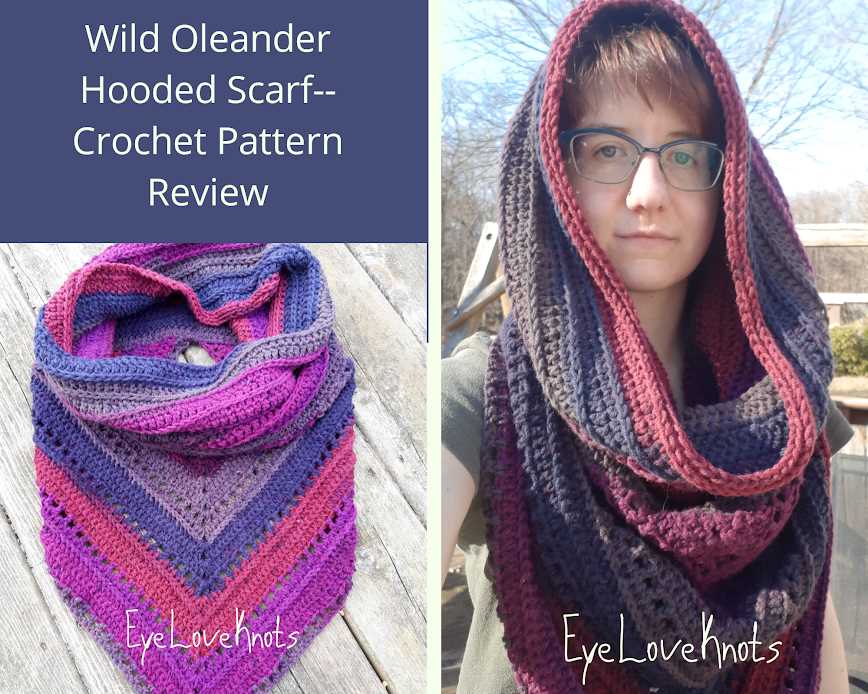
A hooded scarf, also known as a snood, is a versatile accessory that combines the functionality of a scarf and a hood. This combination offers several benefits to the wearer, making it a popular choice for those looking for more than just a regular scarf.
1. Warmth and Protection: One of the main advantages of a hooded scarf is its ability to provide warmth and protection to the neck, face, and head. The hood portion covers the head, protecting it from cold winds and keeping it warm. The scarf part wraps around the neck, providing extra insulation and preventing heat loss from the body.
2. Versatility: Another benefit of a hooded scarf is its versatility. It can be worn in various ways, allowing for different styles and looks. The scarf can be draped over the shoulders for a casual and relaxed look, or it can be wrapped around the neck multiple times for a more layered and cozy feel. The hood can also be worn up or down, depending on the weather and personal preference.
- 3. Convenient and Practical: A hooded scarf is a convenient and practical accessory to have, especially during the colder months. It eliminates the need for an additional hat or hood, as it combines both in one piece. This saves time and effort, making it easier to dress and stay warm while on the go.
- 4. Fashionable and Trendy: Hooded scarves have gained popularity in recent years due to their fashionable and trendy appeal. They come in a variety of colors, patterns, and styles, allowing individuals to express their personal style and complement their outfits. Whether it’s a chunky knit hooded scarf for a cozy winter look or a lightweight and airy one for a stylish spring ensemble, there is a hooded scarf for every season and occasion.
- 5. Practicality in Outdoor Activities: For outdoor enthusiasts and those who engage in winter sports or activities, a hooded scarf is an excellent choice. It offers protection against cold weather conditions while allowing for freedom of movement. The hood provides extra warmth and insulation to the head, preventing heat loss, while the scarf keeps the neck and face protected from the elements.
In conclusion, a hooded scarf is a practical and versatile accessory that offers warmth, protection, and style. Its convenience, fashionability, and suitability for various outdoor activities make it a popular choice among individuals looking for a functional and stylish winter accessory.
Knitting as a Hobby
Knitting is a popular hobby that has been enjoyed by individuals of all ages and backgrounds for centuries. It is a craft that involves creating fabric by interlocking loops of yarn with knitting needles. Whether you are a beginner or an experienced knitter, this hobby offers a wide range of benefits and creative possibilities.
For many, knitting is a relaxing and therapeutic activity. The repetitive motions of knitting can help to reduce stress and anxiety, promoting a sense of calm and mindfulness. This makes it an ideal hobby for those looking to unwind after a long day or during quiet moments of reflection. Knitting can also provide a sense of accomplishment and satisfaction as each project is completed, boosting self-esteem and confidence.
One of the appeals of knitting is the ability to create unique and personalized items. With a variety of yarns, patterns, and stitches, the possibilities are endless. From cozy scarves and hats to intricate sweaters and blankets, knitting allows you to express your creativity and style. You can also make handmade gifts for your loved ones, adding a personal touch that can’t be replicated in store-bought items.
Knitting is not only a creative outlet, but it also offers a sense of community and connection. Many knitting enthusiasts join knitting groups or attend knitting circles, where they can share their passion with others and learn new techniques. These gatherings provide an opportunity to socialize and bond with fellow knitters, creating lasting friendships and a supportive network. Additionally, there are numerous online knitting communities and forums where knitters can connect and share their projects and ideas.
Another advantage of knitting as a hobby is its portability. It can be done almost anywhere, making it an ideal pastime for when you’re on the go. Whether you’re waiting at the airport, sitting in a coffee shop, or taking public transportation, you can easily carry your knitting projects with you. This allows you to make the most of your time and turn idle moments into productive and enjoyable ones.
Overall, knitting offers a multitude of benefits and enjoyment for those who choose to pursue it as a hobby. Whether you are drawn to its therapeutic qualities, the opportunity to create unique items, or the sense of community it provides, knitting is a versatile and fulfilling pastime that can bring joy for a lifetime.
A Brief History of Knitting
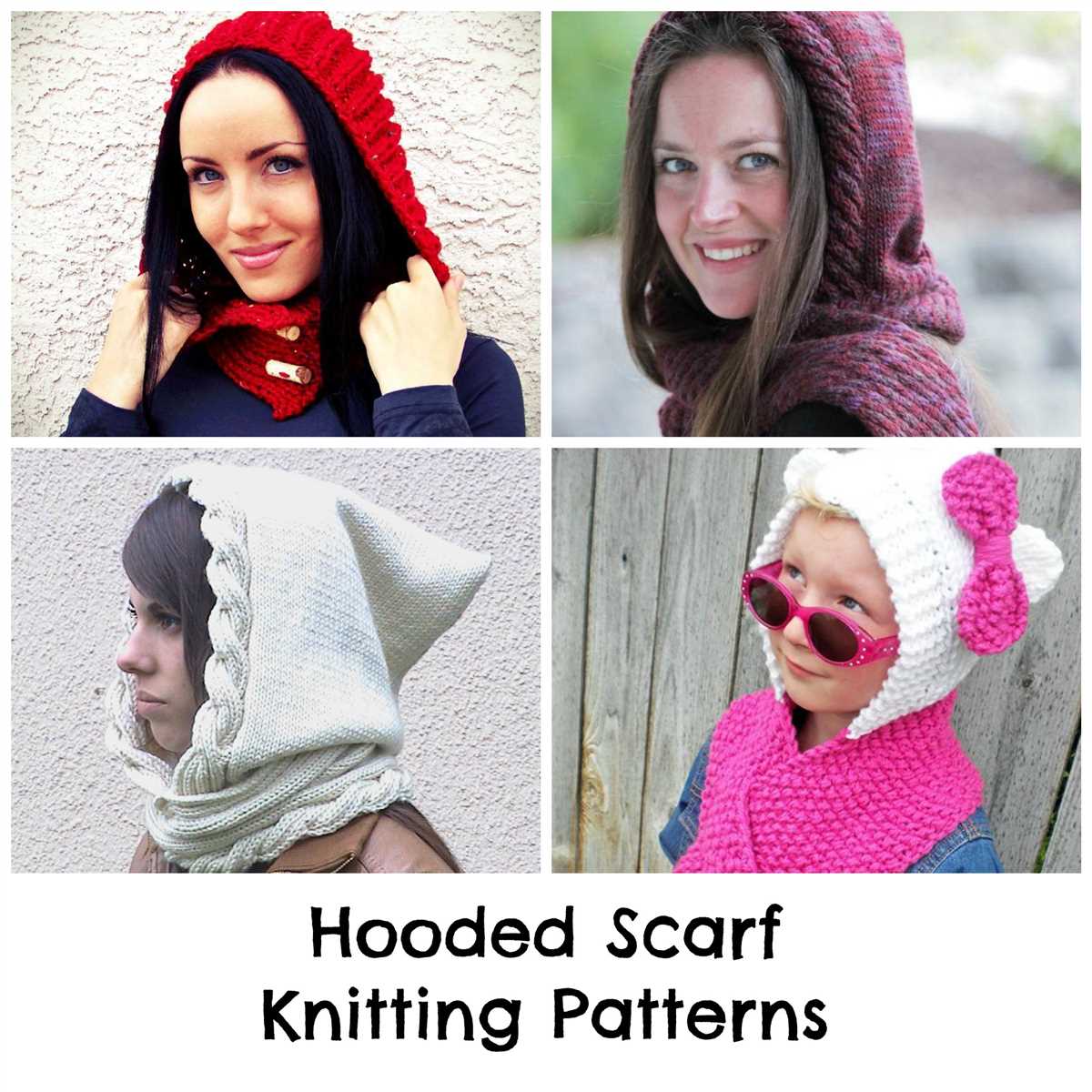
Knitting is a form of textile production that involves creating fabric by interlocking loops of yarn with knitting needles or a knitting machine. The origins of knitting can be traced back thousands of years, with evidence of knitted items found in Egypt from as early as the 11th century AD.
Early Knitting: Although knitting is often associated with Europe, it actually originated in the Middle East. The earliest known example of knitting in Europe can be found in Spain, where a pair of knitted socks was discovered in a tomb dating back to the 4th century AD. These socks were intricately knit with complex patterns, showcasing the skill of early knitters.
Medieval Europe: Knitting gained popularity in medieval Europe, particularly among the upper classes. Knitters were often commissioned to create intricate designs for the nobility, with knitted garments becoming a status symbol. Knitting guilds were formed, and techniques and patterns were passed down through generations.
Industrialization and Mass Production: With the advent of the Industrial Revolution in the 18th century, knitting shifted from being a handcraft to a mechanized process. Knitting machines were developed, allowing for quicker and more efficient production of knitted goods. This led to the mass production of knitted items, making them more accessible to the general population.
Modern Knitting: Today, knitting is enjoyed as both a practical skill and a creative hobby. Knitting patterns are widely available, ranging from simple scarves and socks to complex sweaters and shawls. Knitting communities have formed both in-person and online, providing a space for knitters to share their creations, learn from each other, and connect with fellow enthusiasts.
In conclusion, knitting has a rich and diverse history spanning centuries. From its origins in the Middle East to its widespread popularity in medieval Europe and its development into a mechanized process during the Industrial Revolution, knitting has evolved and adapted over time. Today, it continues to be a beloved craft that brings joy and creativity to millions of people around the world.
Choosing the right yarn and needles
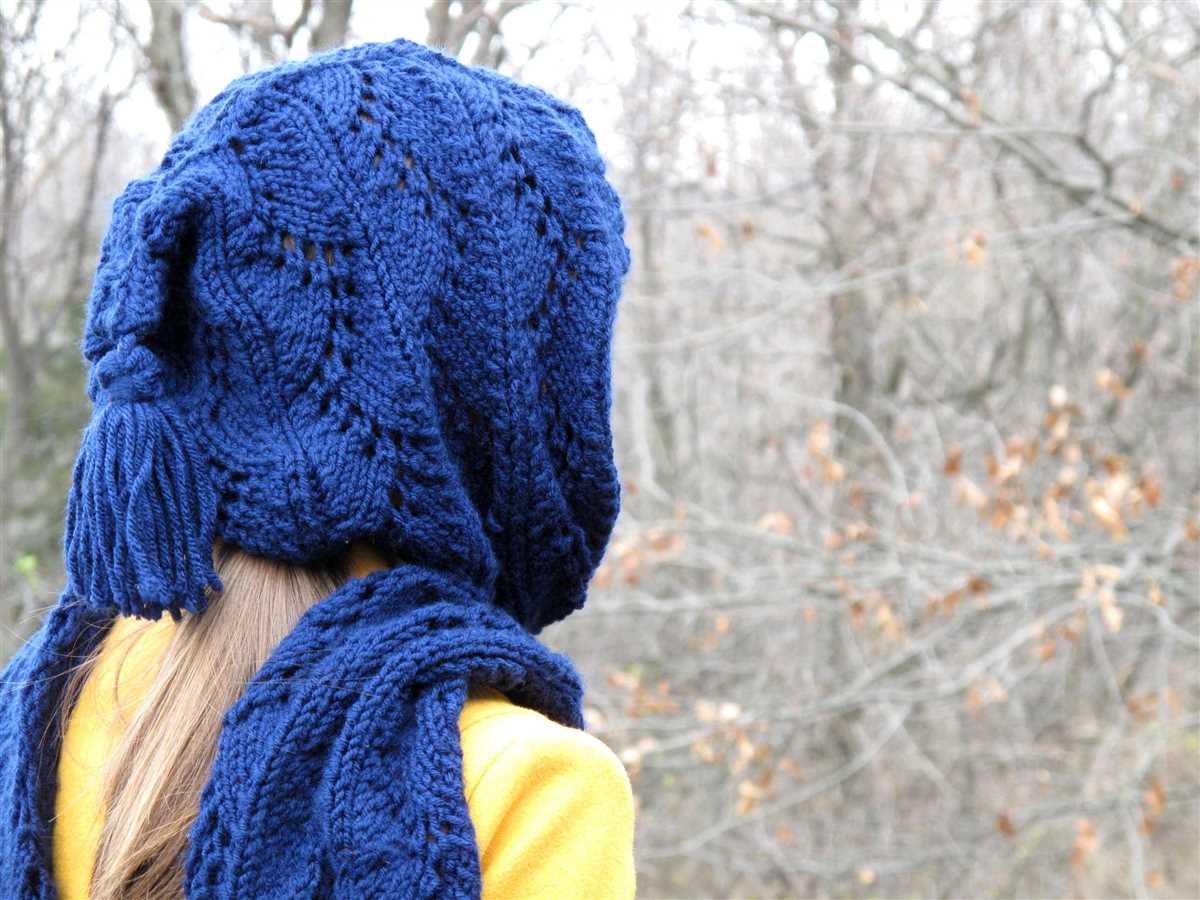
When it comes to knitting a hooded scarf, choosing the right yarn and needles is crucial to achieving the desired result. The type of yarn you choose will determine the overall look and feel of the finished piece, while the needles will determine the gauge and size of the stitches.
Yarn: The yarn you choose should be suitable for the pattern and the intended use of the hooded scarf. Consider factors such as warmth, durability, and texture. For a cozy winter accessory, opt for a bulky or chunky yarn that will provide warmth and thickness. Wool or acrylic blends are great options for a balance between warmth and easy care. For a lighter and more delicate scarf, choose a finer yarn such as fingering or sport weight.
Needles: The size and type of needles you choose will depend on the yarn and the desired gauge. For thicker yarns, larger needles are generally used to create larger stitches and a looser fabric. Conversely, thinner yarns require smaller needles for tighter stitches and a denser fabric. Circular needles are a popular choice for knitting a hooded scarf, as they allow for easier manipulation of the large number of stitches and provide a more comfortable knitting experience. However, straight needles can also be used, especially for beginner knitters who may find circular needles more challenging to work with.
Overall, the choice of yarn and needles is an important consideration when knitting a hooded scarf. By selecting the right materials, you can ensure that your finished piece will be both functional and visually appealing.
Reading a knitting pattern
When knitting a project, it’s important to have a clear understanding of the pattern instructions before you begin. Reading a knitting pattern can seem daunting at first, but with some practice, it becomes easier to follow along and create beautiful garments and accessories.
1. Abbreviations: Knitting patterns use a variety of abbreviations to save space and make instructions more concise. It’s crucial to familiarize yourself with the common abbreviations used in knitting patterns. Some examples include k for knit, p for purl, st for stitch, and inc for increase.
2. Gauge: Gauge refers to the number of stitches and rows per inch using a specific yarn and needle size. It is important to match the gauge listed in the knitting pattern to ensure that your finished project turns out the correct size. To determine gauge, knit a swatch using the recommended needle size and yarn, and measure the number of stitches and rows over a 4-inch square.
3. Sizing: Knitting patterns often include instructions for multiple sizes. Look for the size measurements, usually listed in inches or centimeters, and choose the one that matches your measurements. It’s important to take accurate body measurements before selecting a size to ensure a proper fit.
4. Stitch pattern: Knitting patterns often include a stitch pattern that is repeated throughout the project. The pattern usually includes specific row-by-row instructions for creating the desired texture or design. Pay close attention to these instructions and any stitch charts included in the pattern.
5. Finishing instructions: At the end of a knitting pattern, you will find finishing instructions, such as how to bind off, sew seams, or add embellishments. These instructions are essential for completing the project and giving it a polished, professional look.
By understanding the components of a knitting pattern and taking the time to read and comprehend the instructions before starting, you can confidently tackle any project and create beautiful knitted items. Happy knitting!
Step-by-step instructions for a free knitted hooded scarf pattern
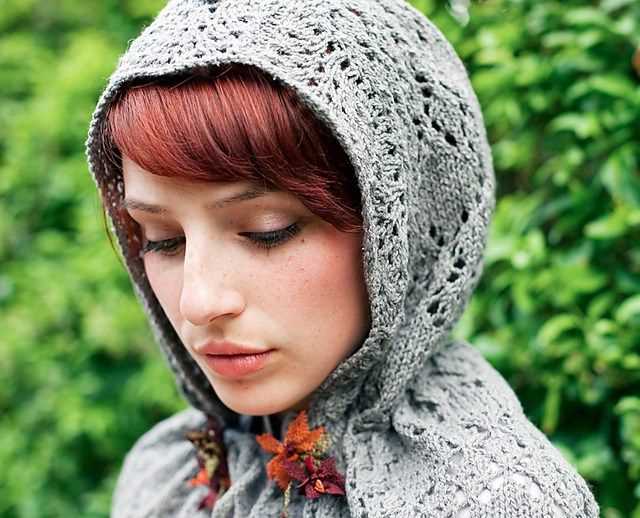
If you’re looking for a cozy and stylish accessory to knit, a hooded scarf is the perfect project. With this free pattern, you can create a knitted hooded scarf that will keep you warm during the colder months while adding a touch of flair to your outfits. Here are step-by-step instructions to help you get started:
Materials:
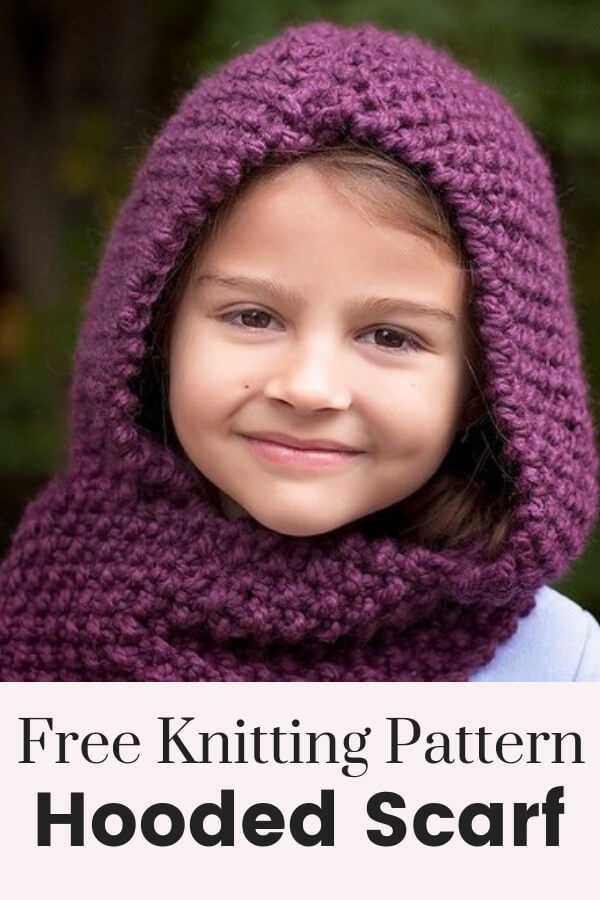
- Size 10 knitting needles
- Approximately 500 yards of chunky weight yarn
- Yarn needle
- Stitch markers
- Scissors
Instructions:
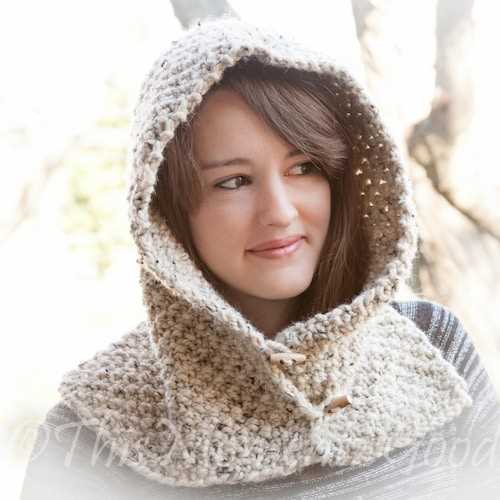
- Start by casting on 100 stitches with your size 10 knitting needles. This will form the base of your hooded scarf.
- Work in a seed stitch pattern for the first 6 rows. To do this, alternate between knitting and purling every stitch across each row.
- After completing the seed stitch section, switch to stockinette stitch. Knit every row for the desired length of the scarf.
- Once you reach your desired length, it’s time to start shaping the hood. Begin by knitting 50 stitches, placing a stitch marker, and then knitting the remaining 50 stitches.
- Continue working in stockinette stitch for the first 10 stitches after the stitch marker. Then, knit 2 together, knit 8 stitches, and knit 2 together again. This will decrease and shape the hood.
- Repeat the decrease row every 8 rows until you have 20 stitches remaining between the stitch markers.
- Knit in stockinette stitch for another 6 rows, and then bind off all stitches.
- Use your yarn needle to weave in any loose ends, and your knitted hooded scarf is ready to wear!
This free knitted hooded scarf pattern is a fun and rewarding project for knitters of all skill levels. Whether you’re knitting it for yourself or as a gift, this cozy accessory is sure to become a winter wardrobe staple.
Advanced techniques for experienced knitters
For experienced knitters looking to challenge themselves and take their skills to the next level, there are several advanced techniques that can be explored.
1. Lace knitting: Lace knitting involves creating intricate and delicate patterns using yarn over increases and decreases to form holes and decorative motifs. This technique requires careful attention to detail and the ability to follow complex lace charts.
2. Fair Isle knitting: Fair Isle knitting, also known as stranded knitting, is a technique that involves knitting with multiple colors in a single row. This technique creates beautiful, colorful patterns and requires skill in managing multiple yarn strands and tension to ensure an even fabric.
3. Cables: Cable knitting involves crossing stitches over each other to create twisted and braided patterns. This technique adds texture and dimension to knitted pieces and requires the knitter to use a cable needle or work cables without a cable needle for more advanced knitters.
4. Intarsia: Intarsia knitting is a technique used to create large, block-like patterns with multiple colors. It involves using separate bobbins or balls of yarn for each color section and twisting the yarns at color changes to prevent holes and ensure a neat fabric.
5. Brioche knitting: Brioche knitting is a unique technique that creates a reversible, textured fabric with a squishy, ribbed appearance. It involves working with two yarn colors and using a combination of yarn overs and decreases to create the characteristic brioche stitches.
6. Double knitting: Double knitting is a technique that allows the knitter to create two layers of fabric simultaneously, resulting in a reversible and highly insulated piece. It involves alternating between two yarn colors and knitting each stitch with both colors, creating a double-sided fabric.
7. Entrelac: Entrelac knitting is a modular technique that creates a basketweave-like pattern by working small diamond-shaped blocks that are joined together as you go. It requires careful attention to the construction of each block and maintaining consistent tension throughout.
These advanced knitting techniques offer a challenging and rewarding experience for experienced knitters, allowing them to create intricate and stylish patterns with their needles and yarn.
Intarsia Knitting
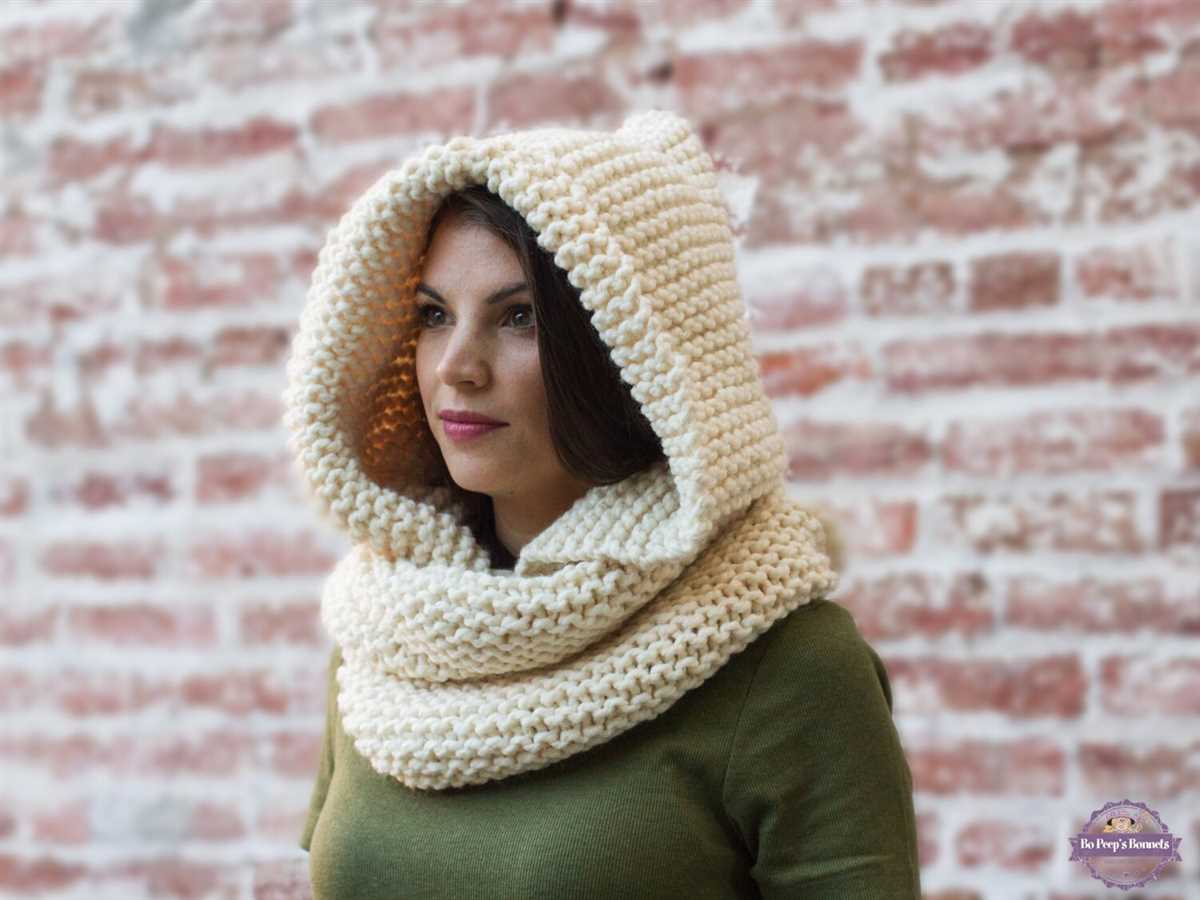
Intarsia knitting is a colorwork technique in which different colored yarns are used to create geometric patterns or images within a knitted fabric. Unlike stranded colorwork, where different colored yarns are carried across the entire row, intarsia knitting involves using separate bobbins of each color for different sections of the design. This allows for precise color placement and eliminates the need to carry yarns behind the work.
When working on an intarsia knitting project, it is important to have a clear chart or pattern to follow. The chart will indicate which colors to use and where to place them in the fabric. Each section of color will have its own separate strand of yarn, which is then wrapped around the main working yarn at the color change. This creates neatly defined color blocks and prevents the colors from bleeding into one another.
Intarsia knitting can be used to create intricate and detailed designs, such as geometric patterns, animals, or lettering. It is a popular technique for making personalized gifts or adding unique accents to garments and accessories. While it does require some planning and concentration, intarsia knitting allows for endless creativity and the opportunity to experiment with different color combinations to make truly one-of-a-kind pieces.
Cable Knitting
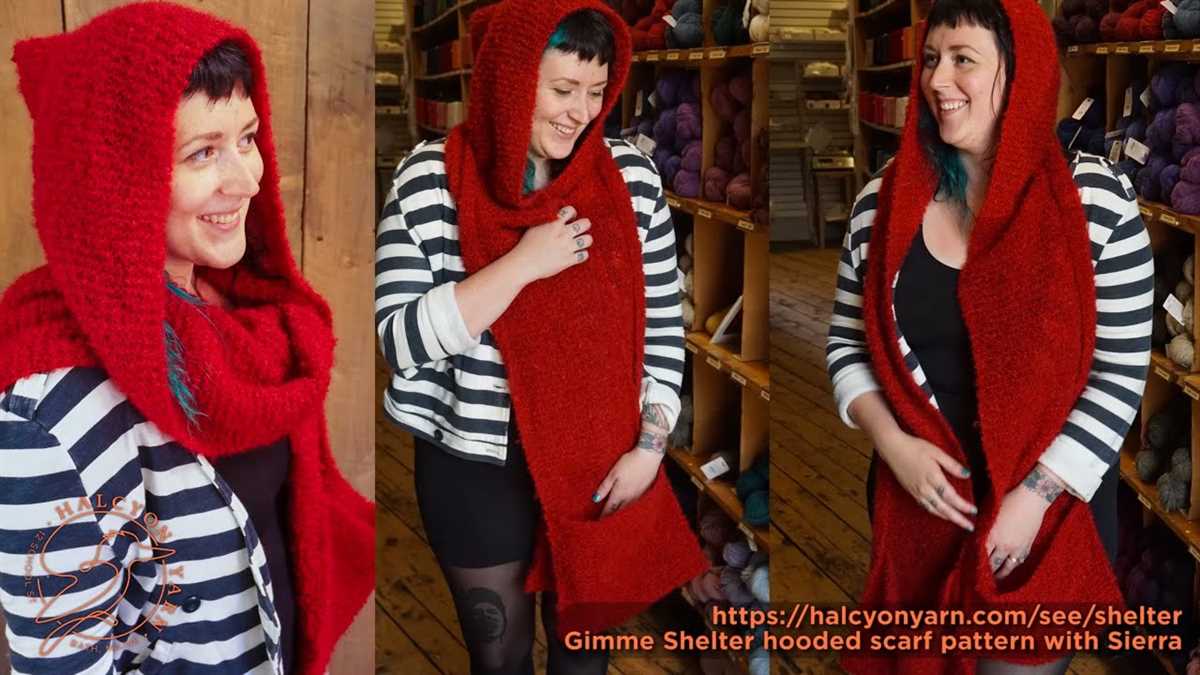
Cable knitting is a popular technique in knitting that creates beautiful and intricate designs. It involves crossing stitches over each other to form twisted patterns that resemble cables. The resulting fabric is thick, warm, and has a luxurious texture.
To create cable knitting, you need to use a cable needle, which is a short and thin needle used to hold the stitches while you cross them. The cable needle is inserted into the stitches you want to cross, and then the stitches are either held to the front or back of the work, depending on the desired effect. The stitches are then knit or purled in the order specified by the pattern.
Cable knitting patterns can range from simple and basic designs to more complex and intricate ones. Some patterns incorporate cables into the overall design of the garment, while others feature all-over cable motifs. There are also variations of cable knitting, such as twisted cables and lattice cables, which add even more depth and texture to the fabric.
Cable knitting is a versatile technique that can be used to create a variety of garments and accessories, including sweaters, hats, scarves, and blankets. It adds visual interest and dimension to any project, making it a popular choice among knitters of all skill levels. Whether you’re a beginner or an experienced knitter, cable knitting is a technique that is worth exploring and incorporating into your knitting repertoire.
Inspiration for customizing your hooded scarf
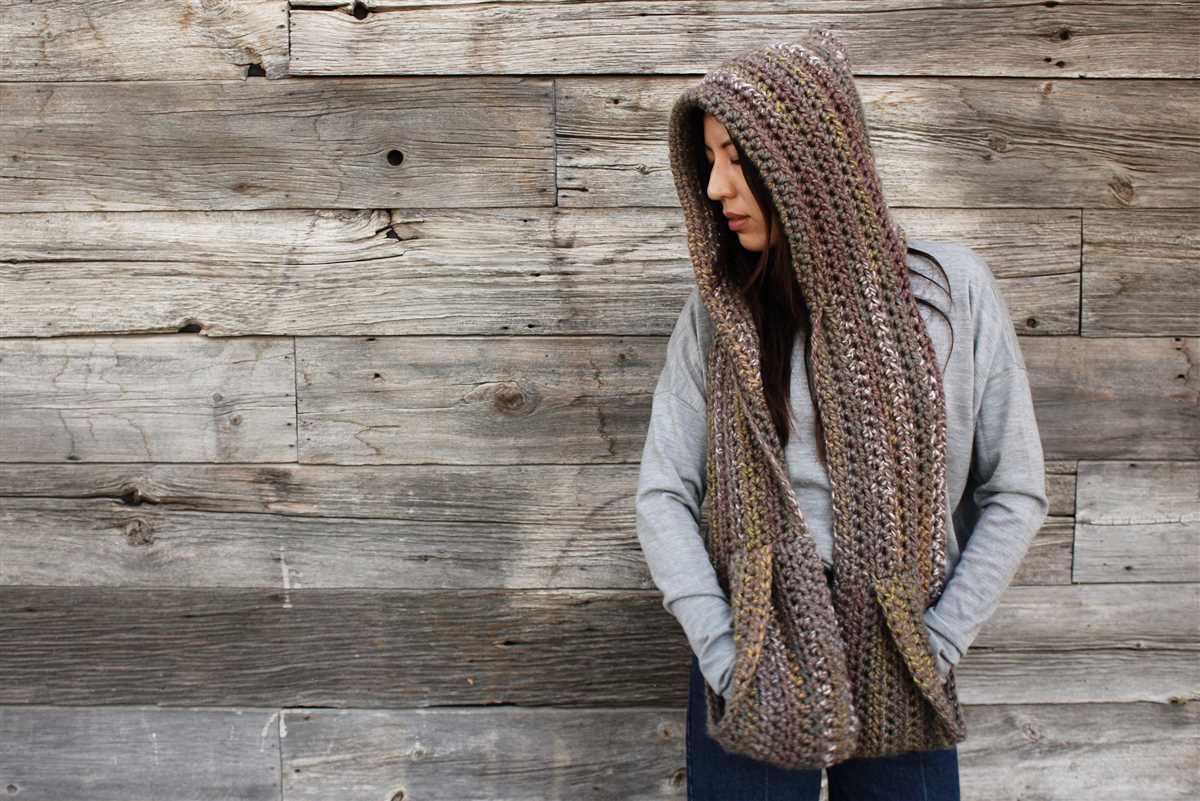
Now that you have the basic pattern for your knitted hooded scarf, it’s time to get creative and make it your own. Here are some ideas for customization:
1. Color choices: Experiment with different colors of yarn to create a unique look. You can go for bold and bright hues for a fun and vibrant vibe, or opt for more muted tones for a cozy and subtle look.
2. Yarn textures: Besides color, you can also play with different textures of yarn. Consider using chunky or fuzzy yarn for a fluffy and soft hooded scarf, or try a silk or bamboo blend for a smooth and luxurious feel.
3. Embellishments: Add some personal touches to your hooded scarf by incorporating embellishments. You can sew on buttons, attach pom-poms, or even add sequins or beads. These small details can make your scarf truly unique.
4. Pattern variations: Once you are comfortable with the basic pattern, you can experiment with different stitches or patterns to create interesting designs. Try using a cable stitch for a more intricate look, or consider adding lace panels for a delicate touch.
5. Length customization: Depending on your personal preference, you can adjust the length of your hooded scarf. Make it shorter for a more casual and everyday look, or make it longer for extra warmth and coziness.
Summary
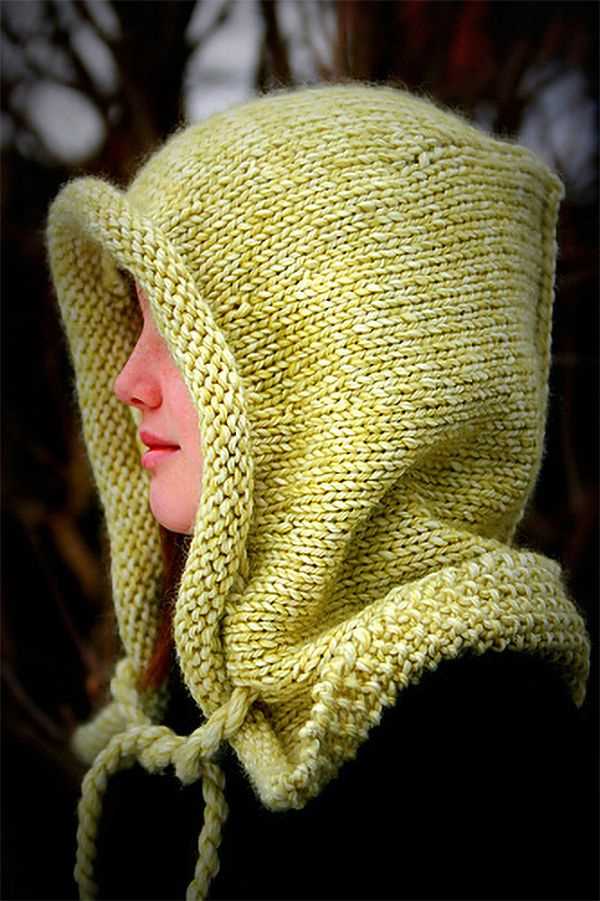
- Customizing your hooded scarf allows you to add your own personal style and make it unique.
- Experiment with different colors, yarn textures, and embellishments to create a look that reflects your personality.
- Try different stitch patterns and adjust the length of the scarf to get the desired effect.
- Have fun exploring your creativity and enjoy wearing your one-of-a-kind hooded scarf!